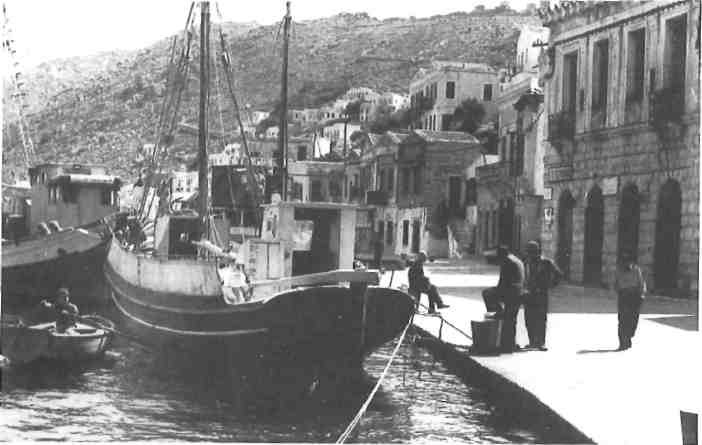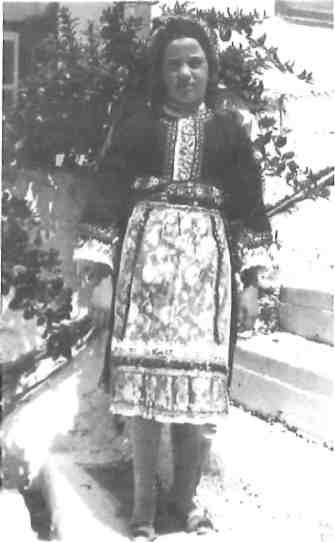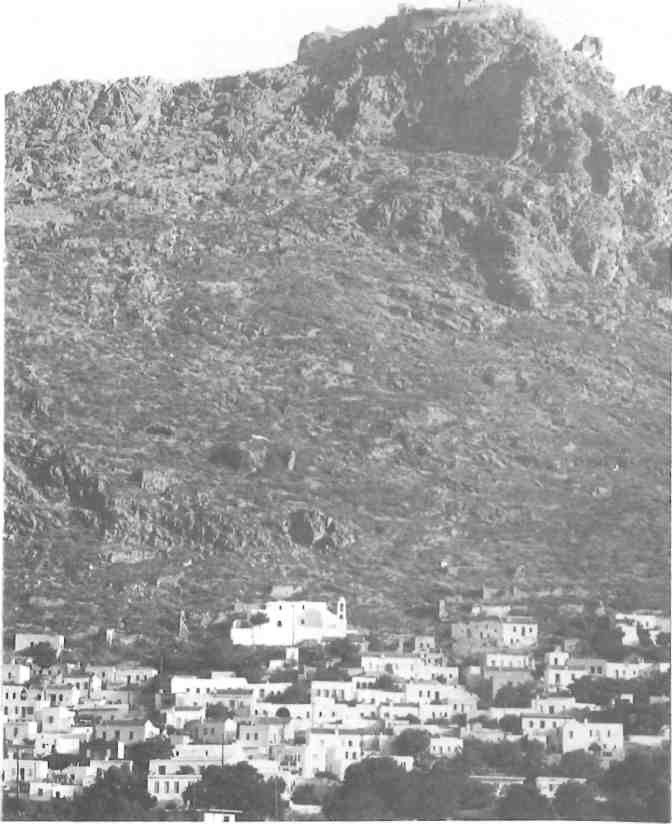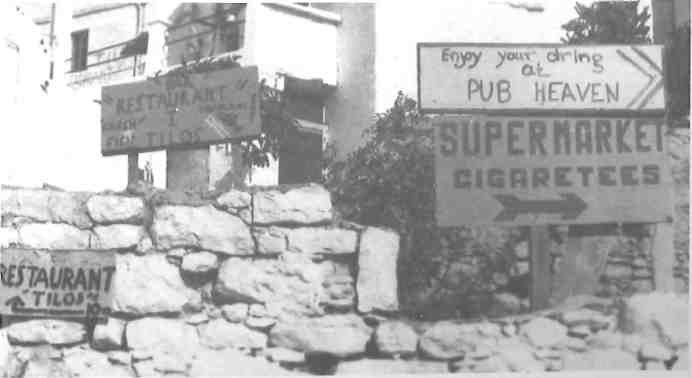As recently as two years ago, one of the major guidebooks on Greece had this to say about Tilos as a day-trip attraction: “Why anyone should want to visit for just a few hours is a mystery, for while it’s not a bad place to rest up on the beach, there is remarkably little to see or do.”

The guidebook also went on to complain about the island’s lack of water, its barrenness, and its short supply of fruit and vegetables.
How wrong can a guidebook be? Thanks to the discovery in 1986 (after a three-year search) of freshwater springs by the Greek Geological Society, Tilos is well on the way to becoming a sparkling and verdant little island, one of the up-and-coming tourist centers of the Aegean.
A four-hour boat trip from Rhodes, Tilos is a long, high, narrow island whose beauty is not immediately discernible from its port town of Livadia. The terrain is mostly flat scrubland here, but once you leave town and head up into the steep headlands behind it, Tilos shows another, more dramatic and appealing side. One passes the ruins of four Genoese fortifications and picks up a paved road that winds through countryside dotted with flocks of goats, herds of cows, and an occasional bull. Kestrels wheel and dip in the hard-blue sky above,and cicadas raise a clatter in the groves of olive trees.

The road terminates in the charming village of Megalo Horio, home to 150 souls. Megalo Horio has half a dozen tavernas and kafeneions and is topped by a white-washed chapel and the ruins of a castle of The Knights of Saint John. The fortress, built in 1310 when the island was attached politically to Rhodes, replaced a Byzantine stronghold, and indeed there is evidence of island’s past, though mentioned briefly in passing by Homer, Strabo and Pliny, that scholars are not certain whether its medieval name by which it was known for centuries, Episcopi or Piscopi, derives from a bishopric or from the watchtowers that once dotted the island.
Nestled in the center of a dazzingly bright flower garden is a small, idyllic hotel which overlooks the adjoining vegetable beds and strutting chickens and turkeys. South of the village is another paved road which winds down to the broad valley which irrigation has transformed into a green belt. The Tropicana, a country taverna (with a few rooms for rent), sits by the side of the road, about half a mile from Eristos beach.
Eristos, a horseshoe-shaped cove with a wide strand of golden sand and ringed by shade trees, must be one of the loveliest spots in all of Greece. Because this is the lee side of the island, the sea is generally calm and clear, and is cooled by underground streams. No hotels, windsurf stations or pedal-boats: just a few campers and their tents, and the odd busload of day-trippers.
Cars can not yet be rented on Tilos, but scooters are available, at the Blue Sea restaurant in Livadia ($15 a day, with fuel). Excursions can also be made by boat to many of the bays and coves which indent the island’s coastline.

There’s also a bus which goes direct from Livadia to the monastery of Aghios Pandeleimon,patron saint of the island, set high on a windswept spit of land on the northwest corner of the island. There are spectacular views from here to the neighboring island of Nisyros and all the way across to the headlands of Turkey.
Tilos is a walker’s paradise. From Megalo Horio, for example, it’s an easy jaunt up to the castle and to the remains of the Pelasgian wall.
Livadia has some good hiking trails as well. One leads to a small beach on the west coast, the other to the totally uninhabited south side of the island.
Another steep six-kilometre climb leads to the ghost town of Mikro Horio, which is located near a cave where the bones of 38 dwarf elephants of the Pleistocene period have been found. Other sights to see on Tilos include the tiny museum in Megalo Horio, which offers a mixture of archaeological finds, local artifacts and 19th century kitsch.
Tilos can even offer some nightlife; 1989 saw the opening of its first disco, Yiannis Pub, with its “live Greek show in season.” Otherwise, all socializing is done in the town’s half-a-dozen tavernas or quayside bars. There are also a couple of kafeneions on the main square, site of the post office and phone company as well.
Tilos presently has three hundred tourist beds,”said Panayiotis Christofidis,the island’s mayor,”but now that we have water, we are building more hotels and pensions. Also, many of the 2000 Tiliots who emigrated to Rhodes and Athens in the post-war years are beginning to return home.
” They are not only restoring their old family houses, but opening farms, shops and restaurants as well as pensions. We are even building our first gas station,” Christofidis said proudly. Tilos is presently working with English and German travel agencies to send more visitors in the future,” the mayor continued.”Until recently, most tourists came here on short stays, but because we have more to offer in the way of amenities and tours, people are beginning to stay here for two and three weeks.”

Before the geologists found water, one of the mayor’s duties was to lock up Livadia’s wells at night,”to make an economy” as he put it. In those days, fresh water was delivered by boat from Rhodes, an expensive operation.
Food also had to be delivered from outside. But now with Tilos’ greenbelt producing a cornucopia of citrus fruit, melons, tomatoes, potatoes and olives, the island is eating better than it ever has.
No wine is made on Tilos, but there is a locally produced savory goats cheese. The supermarkets are loaded with the same packaged goods that can be found anywhere else in Greece.
Winters are mild on the island, according to Mayor Christofidis, “We never have snow and last year we hardly had any rain, either,” he said. “The best thing about winter is that fish is more plentiful, and cheaper. We eat like kings,” he boasted.
Winter tourists are a special breed, of course. Most of those who visit Tilos do so in summer, to take advantage of the island’s fabulous, empty beaches and its breath-taking mountain walks.
Tourist signs in Livadia Tilos is what Rhodes and Mykonos were 30 years ago; a real, unspoiled Aegean island.







